From mega-hits to indie innovators, these apps made the iPhone what it is today
As the App Store approaches its tenth birthday, the statistics surrounding it are astonishing. There are currently well over a million apps for download, and Apple has paid out over $100 billion to developers since the store’s inception.
But perhaps the most amazing fact is Apple co-founder Steve Jobs never wanted the App Store. His vision was of locked-down first-party Apple apps augmented by third-party web apps.
Fortunately, other Apple execs convinced Jobs that a store was necessary, and the rest is history. iPhone OS 2 was released on 11 July 2008, alongside the iPhone 3G, with its shiny new App Store icon.
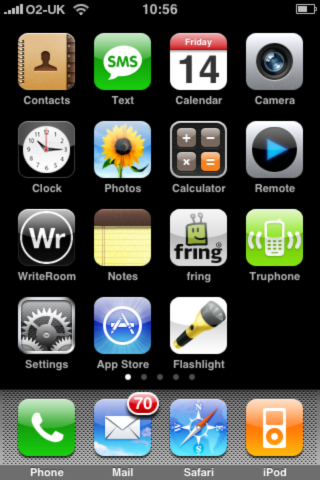
The App Store icon, on what was then called iPhone OS
Initially, there were 500 apps and games available for download – and that seemed like an embarrassment of riches. Little did people know an explosion of choice was just around the corner – and that Apple’s model would become the default on mobile, subsequently aped by the likes of Google and Amazon.
To celebrate the anniversary of one of Apple’s finest creations, we’ve selected ten apps we feel defined the iPhone and mobile apps. These apps aren’t necessarily the best (although many of them are good), but they were all vital in setting us on the path to the modern mobile ecosystem we enjoy today.
10 App Store releases that revolutionized mobile apps forever
The original iPhone was positioned largely as a phone that could let you do some other stuff, such as browse the web, and listen to music. But with the App Store, your device became a tiny portable computer capable of so much more.
Brushes (2008)
With the original iPhone, there was a distinctly utilitarian bent to pre-installed apps. This was a phone primarily for organizing your day (Calendar; Notes), communicating (Mail; Phone; Text), and consuming media (YouTube; Safari).
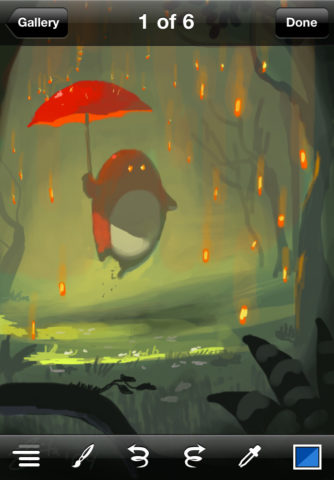
The original Brushes app
But with Brushes, the iPhone became a device for creativity. Anyone could rediscover the joys of fingerpainting, by way of a simple, sleek interface (and one that didn’t ruin the carpet). By 2009, arguments the iPhone was a device purely for consumption were obliterated when Jorge Colombo painted a New Yorker cover using Brushes.
The original app is long gone, but ground-up rewrite Brushes Redux (free) remains available for download.
Shazam (2008)
With iPhones able to be connected to networks with access to awesome computing power, apps have provided many “wow” moments over the past decade – immediate knowledge infusions from Wikipedia; prodding a button to find the next train home.
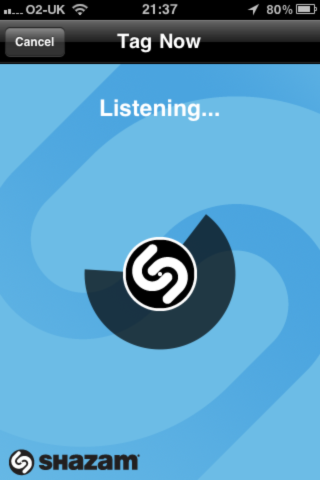
A very old version of Shazam
But Shazam (free) is our pick, its magic being able to name any song by ‘listening’ to a few seconds of the track. Great for defusing arguments about what you’re listening to in a bar, or identifying what’s playing on a TV show soundtrack. Apple certainly thought so – it bought Shazam this year.
RunKeeper (2008)
In the late 2000s, people into outdoor exercise had access to everything from simple pedometers to high-end bespoke tracking devices. RunKeeper (free) disrupted the industry by packing everything into your phone. Now, with an iPhone strapped to your arm, you could find out how far and fast you’d ran or cycled, and pore over data on returning home.
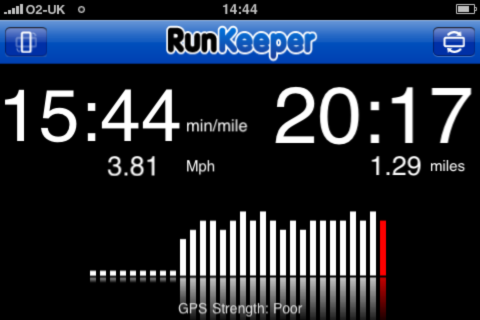
An early version of RunKeeper
The best bit, though, was mapping. Using the iPhone’s GPS capabilities, RunKeeper showed where you’d gone. This data later became shareable, creating exercise communities, and boosting encouragement and competition between friends.
WhatsApp (2009)
With the plethora of messaging systems available to mobile users today, it’s easy to forget that back in 2009, most people were still paying considerable money to send text messages through their network carrier. WhatsApp (free) forever upended that business model.
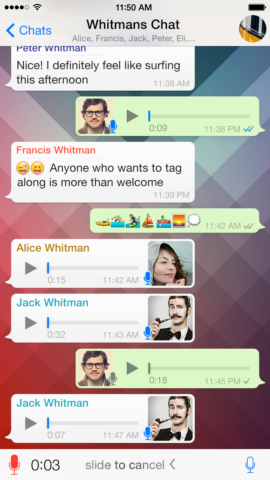
WhatsApp remains a powerful, feature-rich messaging app
In a sense, the app democratized messaging, merely requiring you to have an account and some kind of data connectivity. Suddenly, it became viable to live inside of messaging, sending dozens of messages a day; and cross-platform support meant friends without iPhones weren’t left behind.
Foursquare (2009)
The original Foursquare began people’s obsession with location check-in. In its original incarnation, the app differentiated itself from other social networks, which had you share what you were doing, by sharing locations and trying to get people together.
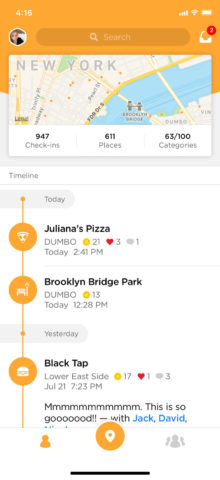
The soul of the original Foursquare lives on in Swarm
Location-sharing is now everywhere, from check-ins being baked into social networks like Facebook, to the more privacy-oriented GPS tracking in Apple’s Find My Friends. As for Foursquare, its main app pivoted to a city guide – Foursquare City Guide (free) – but the check-in aspect lives on as Foursquare Swarm (free).
Instagram (2010)
The iPhone had a camera from day one. This was not unusual – after all, many mobile phones had long been able to take photos. But Instagram (free) revolutionized what people did with their snaps, by smashing photography into a social network.
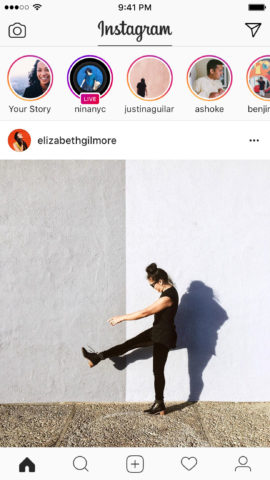
Instagram may have lost its textures over the years, but it’s still a favoured app for social snappers
Tapping into the immediacy of classic instant cameras, Instagram encouraged users to snap anything and everything, slather shots in retro-cool filters, and share the results to multiple social networks. In echoing the simplicity, elegance and speed of instant photography, it became hugely popular, and was subsequently snapped up by Facebook for a cool $1 billion in 2012.
Uber (2010)
Apps made public transport more palatable. With GPS, you could more easily find transit routes in unfamiliar cities, and simply prod a button and have tech magic instantly display your next train home.
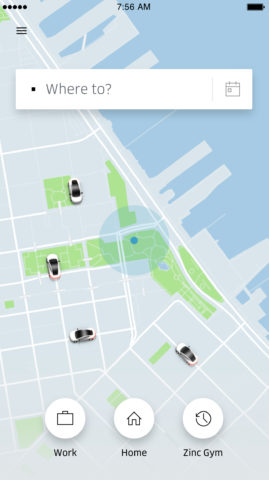
With Uber, you never need wait for a taxi again
Uber (free), though, disrupted public transport in a more overt fashion. Now, you could open an app, say where you wanted to go, and instantly receive a fare. Your ride could then be tracked, and you could pay however you liked. It was a much simpler way to get from A to B – and all made possible by an iPhone app.
GarageBand (2011)
On the Mac, GarageBand gave everyone user-friendly access to some seriously high-end tools for making music. But in 2011, GarageBand came to iOS, further shrinking a recording studio to the point it could fit into your pocket.
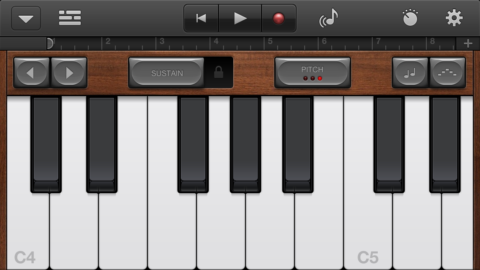
Even earlier versions of GarageBand were very impressive
Even the initial release was hugely ambitious: smart instruments gave total newcomers a fighting chance of crafting a hit single; guitarists could plug in an instrument and get access to classic amps and stompboxes; and there were tons of synths.
Today, GarageBand (free) is even more powerful – conceivably an app within which pro musicians can record entire albums, yet still approachable enough to allow anyone to make a noise.
Tinder (2012)
In much the same manner as Foursquare, Tinder (free) rethought the nature of social interaction by leveraging the location-based nature of modern smartphones. But also it brought with it new interface conventions that upended everything you knew about dating apps.
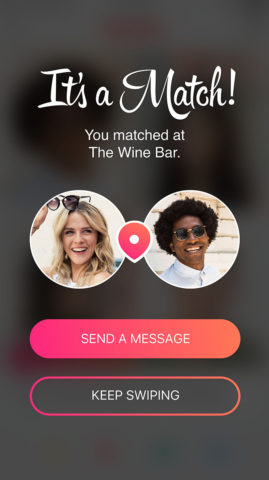
Swipe your way to love with Tinder
Rather than poring over details in a web browser, Tinder was about the immediacy of connections. You swiped, respectively, right or left to like or dislike whoever was currently on your screen. If two people liked each other, they could chat and see where that took them.
Workflow (2014)
Our final choice is Workflow (free), an app we’ve featured before, but that perhaps exists at the periphery of many iPhone users’ minds.
The app made workflows user-friendly on the iPhone. By way of pre-defined or user-created recipes, it was suddenly possible to string together actions that could perform all kinds of tasks with multiple apps – and trigger them with a single tap.
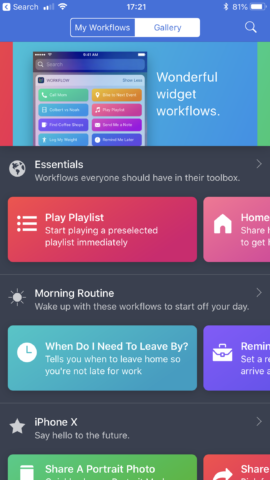
Workflow is the basis for a major new iOS 12 feature
Apple bought the app last year, and no-one was really sure why – until WWDC 2018. There, we saw Workflow reimagined as Shortcuts, an app that enables you to create Siri workflows, pointing to an exciting future for interacting with your iPhone.
